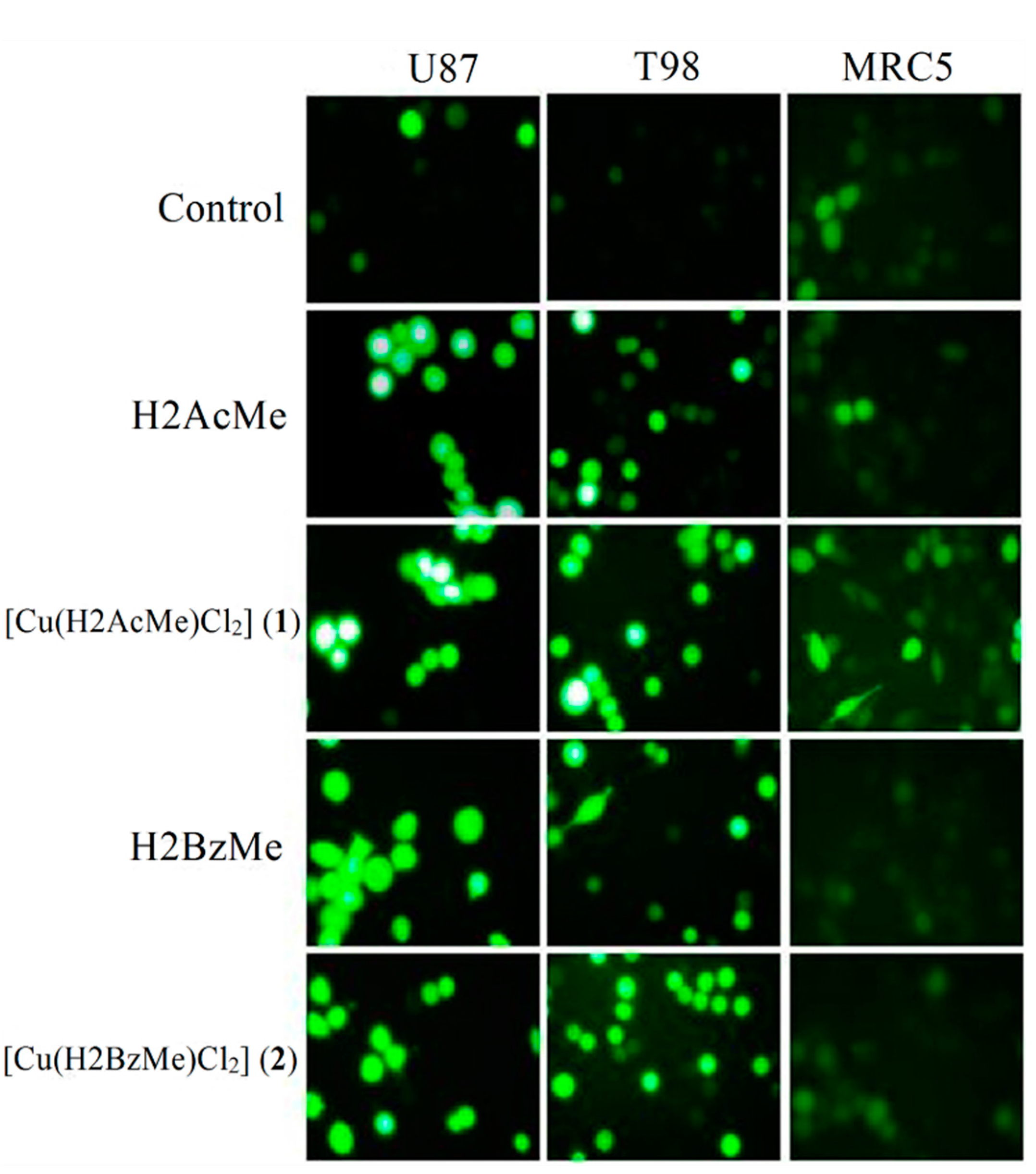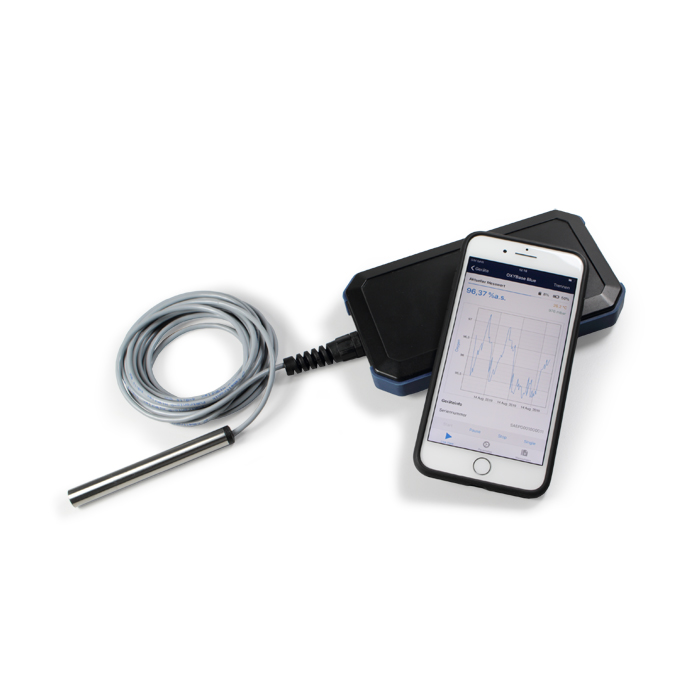Oxygen Theory Guide 1 Theoretical background of oxygen measurements 1.1 Physicochemical background of oxygen measurement Oxygen typically is encountered as a gas. Therefore, the in-line and on-line measurement of oxygen in processes is a measurement of the pressure which the oxygen applies either in the gas or in the liquid in which it is. A normal blood oxygen level typically ranges from 75 to 100 mm Hg. In the case of dangerously low blood oxygen, the level that requires supplemental oxygen is anything under 60. The best way to monitor blood oxygen levels is through your arterial blood gasses (ABGs); however, this can be difficult to do at home. Blood cells are a bright red when they are loaded with oxygen, and they change to a bluish color when they are no longer carrying a full load of oxygen. The finger clip machine cannot give a perfect measurement of your oxygen saturation; it can give only a rough estimate, and its measurement can be affected by things as simple as red nail. Dissolved oxygen is a vital parameter in the environmental monitoring of water quality. It is a great indicator of the general health of the ecosystem. As more organisms die, and eventually decay, it causes a bacterial growth spike. This spike results in an increase in DO use, and a decrease in the overall DO levels.

Sensors for measuring oxygenSemiconductor Equipment |
Oxygen measurement with an zirconium oxide sensor
Zirconium oxide is the most common component of the element Zirconium. ZrO2 is an oxide ceramic or refractory, which crystallizes in 3 lattice structurs. By doping the zirconium dioxide with Yttria, defects or voids are introduced in the crystal lattice. In the solid zirconia, some Zr4+ ions are replaced by Y3+ ions so that oxygen vacancies are created which allow oxide anions O2-, especially at high tempertures over 650°C to diffuse fast in the solid crystal lattice. Yttrrium doped Zirconia is a solid electrolyte. This conductivity for oxygen anions is used for measuring oxygen by Zirconium oxide (ZrO2) high temperature electrochemical sensors, known also as hot probes.
The oxygen measurement cell
In the measurement unit, a zirconium oxide membrane separates a reference gas (e.g. air) from the sample gas. Both sides of the membrane are coated with thin palladium films, which serve as electrodes so that a solid, electrochemical cell is formed. As long as the oxygen partial pressure is equal on both sides, the movement of oxygen ions within the membrane is random. When the oxygen concentration on both sides of the membran becomes different, then oxygen ions start migrating within the crystal lattice from the side of higher O2 partial pressure to the lower pressure side. A concentration gradient of oxygen ions is established in the ZrO2 lattice, which produces a voltage potential between the two platinum electrodes according to the Nernst Equation. The relationship between the voltage and the O2 partial pressure change in the gas sample is logarithmic. This methode can be used for measuring oxygen concentration in the percent-range as well as for oxygen trace measurements (ppm). Zirconium oxide oxygen analyzers have fast speed of response. It needs to be considered that already the presence of small amounts of reducing gases will disturb the trace measurement.

Due to the high operating temperature, zirconium oxide sensors can be used for measuring oxygen O2 in a furnace / in furnaces like vertical furnaces, horizontal furnace, conveyer furnaces, box ovens and industrial furnaces.
Stange O2-Sensor for the determination of the leakage rate and process control
During many processes like vacuum processes, polyimide cure, debindering or ceramics it is important to know whether residual oxygen is still present in the furnace. With the oxygen sensor evidence can be provided that the process can run off safely. The signal of the oxygen sensor offers the possibility to set process specific limits, with which actions can be initiated, e.g. the termination of heating procedure or the discharging of emergency purging.
As an analysis tool a Stange controller can be used or also any other suitable display. The batch comparison function of the Stange software ECS-2000 ensures a simple checking of the continuity of the sensor signal of an unmodified processes. The signal of the oxygen sensor is pressure independent!
| Oxygen Sensor | ||
|---|---|---|
|
- About us ▾
- Products ▾
- Semiconductor Manufacturing
- Semiconductor Furnaces ▸
- Factory Automation ▸
- Solar cell-Manufacturing
- Equipment for Solar Applications ▸
- LCD-Manufacturing
- Machines for manufacturing LCD, OLED & DSSC ▸
- Fuel cell & battery-Manufacturing
- Industrial furnaces
- Thermal treatment of steel ▸
- Thermal treatment of glass & ceramic ▸
- Gas technology
- Gas Generators ▸
- Exhaust Gas Cleaning Systems ▸
- Gas sensors ▸
- Furnace accessories
- Applications ▾
- Semiconductor Manufacturing
- Thermal Processes ▸
- Solar cell-Manufacturing
- LCD-Manufacturing
- Manufacturing LCD, OLED & DSSC ▸
- Fuel Cell & Battery Manufacturing
- Industrial furnaces
- Thermal treatment of steel ▸
- Thermal treatment of glass & ceramic ▸
- Gas technology
- Gas generators ▸
- Exhaust Gas Cleaning Systems ▸
- Gas sensors ▸
- Furnace accessories
- Language ▾
Measurements taken with the Blood Oxygen app are not intended for medical use and are only designed for general fitness and wellness purposes.
The Blood Oxygen app is only available in certain countries and regions. Learn where the Blood Oxygen app is available.
What is blood oxygen

Your blood oxygen level represents the percentage of oxygen your red blood cells carry from your lungs to the rest of your body. Knowing how well your blood performs this vital task can help you understand your overall wellness.
The majority of people have a blood oxygen level of 95 - 100%. However, some people live a normal life with blood oxygen levels below 95%. Slightly lower values while sleeping are expected, and some users might experience values below 95%.
How to use the Blood Oxygen app
Make sure that you meet the below requirements and follow the steps to set up the Blood Oxygen app.
Here's what you need
- Make sure that the Blood Oxygen app is available in your country or region. You will be able to see this during the setup process.
- Update your iPhone 6s or later to the latest version of iOS.
- Update your Apple Watch Series 6 to the latest version of watchOS.*
- The Blood Oxygen app is not available for use by people under 18 years old. You can confirm or set up your age in your Health Profile.
*The Blood Oxygen app is not available if you set up your Apple Watch with Family Setup.
Set up the Blood Oxygen app and background readings
Oxygen Measurement
- On your iPhone, open the Health app.
- Follow the onscreen steps. If you don't see a prompt to set up, tap the Browse tab, then tap Respiratory > Blood Oxygen > Set up Blood Oxygen.
- After you complete setup, open the Blood Oxygen app on your Apple Watch to measure your blood oxygen levels.
If you still don’t see the Blood Oxygen app on your Apple Watch, you can search the App Store on your Apple Watch for Blood Oxygen and download it.
Oxygen Saturation Measure
The Blood Oxygen app is installed during the setup in the Health app. If you deleted the Blood Oxygen app, you can install it again from the App Store on your Apple Watch if you’ve completed the Blood Oxygen app setup.
How to take a blood oxygen measurement
You can take a blood oxygen measurement at any time with the Blood Oxygen app.
- Make sure that your Apple Watch is snug but comfortable on your wrist.
- Open the Blood Oxygen app on your Apple Watch.
- Stay still, and make sure your wrist is flat with the Apple Watch facing up.
- Tap Start, then keep your arm steady for 15 seconds.
- Wait. The measurement takes 15 seconds. At the end of the measurement, you will receive the results.
- Tap Done.
How to get the best results
- Rest your arms on a table or in your lap while you take a measurement. Keep your wrist and palm down and flat, and hold as still as you can.
- Make sure that your Apple Watch isn’t loose on your wrist. The band should be snug but comfortable, and the back of your Apple Watch needs to be touching your wrist.
- Make sure that the back of your Apple Watch is flush with the top of your wrist. If your wrist bones interfere with this, move your watch 1 to 2 inches up your arm away from your wrist bone.
Additional factors
Even under ideal conditions, your Apple Watch may not be able to get a reliable blood oxygen measurement every time. For a small percentage of users, various factors may make it impossible to get any blood oxygen measurement.
- Skin perfusion (or how much blood flows through your skin) can impact measurements. Skin perfusion varies significantly from person to person and can also be impacted by the environment. If you are out in the cold, for example, the skin perfusion in your wrist might be too low for the sensor to work with the Blood Oxygen app to get a measurement.
- Permanent or temporary changes to your skin, such as some tattoos, can also impact performance. The ink, pattern, and saturation of some tattoos can block light from the sensor, making it difficult for the Blood Oxygen app to get a measurement.
- Motion is another factor that can affect your ability to get successful background or on-demand measurements. Certain postures, such as arms hanging by your side or fingers in a fist position will also result in unsuccessful measurements.
- If your heart rate is too high (above 150 bpm) while at rest, you won't be able to get a successful blood oxygen measurement.
About background measurements
The Blood Oxygen app on your Apple Watch will occasionally measure your blood oxygen levels if background measurements are on. This will usually happen when you are not moving. Depending on how active you are, the number of readings collected each day and the time between these readings will vary. Blood oxygen measurements use a bright red light that shines against your wrist, so it may be more visible in dark environments. If you find the light distracting, you can turn off background measurements.
- Open the Settings app on your Apple Watch.
- Tap Blood Oxygen, then turn off In Sleep Mode and In Theater Mode.
Blood oxygen measurements only occur during sleep if the Track Sleep with Apple Watch setting is turned on.
How the Blood Oxygen app works
In Apple Watch Series 6, the optical heart sensor has been redesigned to add blood oxygen measurement capabilities. During a blood oxygen measurement, the back crystal shines red and green LEDs and infrared light onto your wrist. Photodiodes then measure the amount of light reflected back.
Advanced algorithms use this data to calculate the color of your blood. The color determines your blood oxygen level — bright red blood has more oxygen, while dark red blood has less.
View your Health information
Oxygen Measurement Lpm
All blood oxygen measurements, whether on-demand or in the background, are saved in the Health app on your iPhone.
- Open the Health app.
- Tap the Browse tab, then tap Respiratory > Blood Oxygen.
You can also filter and view measurements taken only while sleeping or in a high-elevation environment.
Things you should know
- Blood Oxygen app measurements are not intended for medical use, including self-diagnosis or consultation with a doctor, and are only designed for general fitness and wellness purposes.
- The Blood Oxygen app is designed for users who are at least 18 years old.
Learn more
